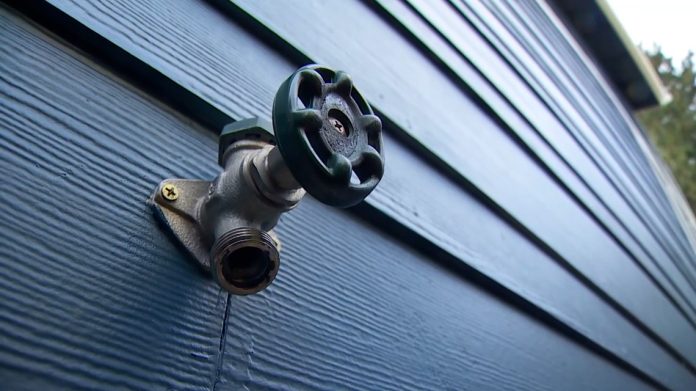There are a few things you can do to help prevent your pipes from freezing as the temperature drops this winter.
SEATTLE — Winter can often bring temps below freezing in western Washington and one thing everyone can do to prepare is to make sure their pipes are protected.
Temperatures that dip below freezing can cause plumbing issues that occasionally result in burst pipes.
The problem is fairly simple: water freezes, thaws and expands, which is too much for the pipes to handle, so they crack.
The city of Bothell has shared the following tips to prevent frozen pipes:
How to prepare your pipes for cold weather
- Check your home for leaks or holes
- Drain water sprinkler supply lines and detach hoses and sprinkler attachments
- Wrap pipes that are outdoors or in cold spots: Consider installing specific products made to insulate water pipes like a “pipe sleeve” or installing UL-listed “heat tape,” “heat cable,” or similar materials – even a quarter inch of newspaper can provide protection
- Look in the basement, crawl space, attic, garage, and under kitchen and bathroom cabinets. Both hot and cold water pipes in these areas should be insulated
- Keep faucets cracked open to prevent freezing
What to do if your pipes are frozen
You should suspect a frozen pipe if you turn on a faucet and only a trickle comes out. Locate the suspected frozen area of the water pipe — likely places include pipes running against exterior walls do the following:
- Keep the faucet open: Running water through the pipe will help melt more ice in the pipe
- Apply heat to the section of pipe using an electric heating pad wrapped around the pipe, and electric hair dryer, a portable space heater, or wrapping pipes with towels soaked in hot water
- Check all other faucets: If one pipe freezes, others may freeze, too
What to do if a pipe burst
If a water pipe broke in your home you should shut off the water. You should locate the shut-off valve before you have an emergency. You can look in the following places:
- In the crawl space or basement, where the water line enters the home
- In the garage where the water line enters the wall or ceiling, near the water heater or laundry hookup
- Outside near the foundation, often protected by a concrete ring or clay pipe.
- Near your home’s water meter
Emergency weather shelters:
Several counties open emergency weather shelters in response to dangerously cold temperatures every winter.
Find links to cold weather shelter information below:
Hypothermia symptoms to watch out for in cold temperatures
Anyone who is spending any length of time outside during cold temperatures should know the signs of hypothermia.
According to Public Health – Seattle and King County, these are the symptoms to watch out for:
- Uncontrolled shivering
- Slow or unclear speech
- Feeling extremely tired
- Stumbling when walking
- Confusion
- Semi-consciousness or unconsciousness
What to do if someone has hypothermia:
- If a person becomes unconscious, seek medical attention immediately
- Do not warm a person up too quickly
- Bring the person indoors or to a dry place protected from the wind
- Remove wet clothing and cover the person with dry blankets. Cover the head, hands and feet
- Put the person in a cot or bed next to a warm, but not hot, heater
- Lie under the covers next to the person to transfer your own body heat. If possible, have someone else lie on the other side
- Give the person warm, not hot, broth or soup. Do not give them alcohol to drink
- If an infant or a small child is presenting symptoms of hypothermia, wrap them inside your own clothing against your skin
Download our free KING 5 app to stay up-to-date on news stories from across western Washington.
www.king5.com
https://www.king5.com/article/news/local/protect-pipes-freezing-temperatures/281-db6a0b06-c9be-47c5-84a2-cb8c0b199234















